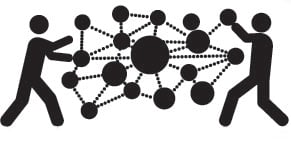Top 10 Most Important DAM Features
July 12, 2017 •Antra Silova

Digital asset management (DAM) has become an important part of an organisation’s content management strategy. The requirements for DAM go far beyond just a solution for storing digital assets.
Last month we invited you to give us your opinion via an online survey on what features are most important to you in a DAM. We split the survey in 3 sections: User Experience (UX), Functionality, and Capabilities.
Based on the survey results, all 3 seem to be equally important to DAM users, with Capabilities taking the top spot with 4 entries making the Top 10, and UX and Functionality with 3 each in the Top 10.
These results list out the top 10 most voted for suggestions, we’ll be publishing the complete results in later content. We’re sharing the results of the survey with you under Creative Commons to help enrich everyone’s understanding of DAM. If you have something to add, please leave a comment on this blog, as we are keen to find out more. You can view a recorded webinar on this topic where we extend the results of the survey with our knowledge and experience working on 100s of DAM projects.
1. UX. Ease of use – simple easy to use interface

No surprise 95% of respondents want their DAM solution to have a simple, easy to use, intuitive interface. DAM is about making content available to users – an easy to use solution makes it achievable. With user adoption as one of the most challenging aspects of DAM implementation (take a look at our Top 10 Mistakes When Implementing a DAM Solution), if a solution allows you to perform basic tasks without user training, we have the basis for the success of the project.
2. Capabilities. Integration – ability to integrate with popular platforms/ applications

Integration has been tipped over the past 10 years as the most important DAM requirement of the future. Now that time is upon us and integration is number 2 most popular feature.
Digital asset management has always been about organisation’s infrastructure – it needs to integrate into an organisation’s environment.
Touching on the user adoption again – integrating your DAM with other content management platforms within your organisation allows more users to come into contact with the DAM, allows them to work on assets and distribute assets while still within their preferred platform, streamlining workflow and improving productivity along the way.
3. Capabilities. Permissions – having easy access to allow or restrict permission to assets

Permissions are an important part of any enterprise solution. Voted number three most important feature highlights how DAM has moved from a workgroup style solution to enterprise wide for most organisations. Importantly for an organisation, permissions keep its assets and brand secure. You have control over who, when and how uses your company’s assets.
4. Functionality. Sharing – the ability to share easily without using traditional email/ attachment

Why is it important? It’s all about collaboration. Sharing saves time and space on your hard drive as you can share assets directly from a DAM using share links or URLs. Send large files via branded portals, reinforcing your brand at the same time. Reuse and re-purpose already created media without having to re-create.
5. UX. Easily searchable – search tags to easily find assets

DAM used to be all about Can’t find it, can’t use it – and this survey shows it still is! Sharing the spot for 4th /5th spot. A digital file that can’t be found is not an asset. DAM solutions these days provide different ways of making the assets easily found: keywords, tags, custom queries. More sophisticated solution provides automatic tagging to reduce the time to curate your content.
6. Capabilities. Multiple file formats – capability to store multiple file formats (images, videos, presentations, etc.)

This is an easy one and has been core differentiator of DAM to other content management solutions since inception. Now organisations do not want to be limited with just still image files, but store, share and manipulate with images, documents, videos, presentations, and other types of files all at once without any barriers.
7. Functionality. Automation – possibility of automating routine tasks

Digital asset management combined with automation creates the basis for a seamless, streamlined workflow environment. For many organisations these workflows enable quick and cost-effective operations to find, create, re-purpose and deliver the media assets, making DAM of critical importance.
8. Functionality. Bulk metadata edit – ability to add metadata to multiple files at once

It is often the simple things in life that make it all worthwhile. When working with thousands of images, having a fast and time-saving option to improve your processes makes a big difference in getting the job done and the project successful.
9. UX. Easy preview – easy media preview of all formats

Again, it’s the simple things in life! What would a DAM be without thumbnails and previews of ALL content regardless of format? Not a DAM!
10. Capabilities. Customisable – customisable to suit diverse needs

Isn’t it always a case – as soon as you implement a DAM solution someone asks: can it, could it, would it? DAM projects are different from other enterprise solutions in that there are iterative in nature. The reality is an organisation’s use of content/media changes quickly. We are at just the tip of the iceberg in how media will be used in corporate communication. Just watch any futuristic movie and you will see much more media being used for all forms of communication. A DAM solution that can easily adapt to an organisation’s needs becomes a great investment and a long-running solution.
These finding are based on 37 respondents of our online survey. Thank you for taking this survey!


